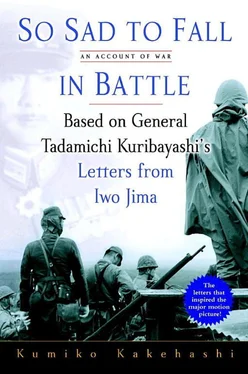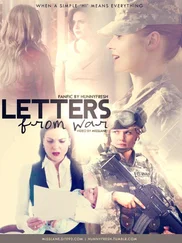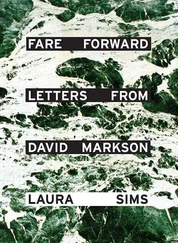This “enormous material gap between the two sides” is the discrepancy in the industrial and military might of the two nations.
Out at the front there was a brilliant commander in chief and brave soldiers willing to sacrifice their lives ungrudgingly. But no matter how many of them died, it was not enough to bridge the gap in relative strength between the two countries that had been there from the start. When Kuribayashi says, “We simply do not have the capacity to successfully implement any tactics or countermeasures,” my guess is that he was not talking only about Iwo Jima, but about the entire war.
The telegram was stern in its disdain for the war leaders who, after first rushing into war without assessing its realities, then produced no more than a series of makeshift policies to get them out of whatever their present difficulties happened to be. Using a war-lesson telegram as his mouthpiece, Kuribayashi was able to say things that the average soldier could not say even if he wanted to, and that the officers on the ground, who believed in the ethos of fighting and keeping their mouths shut, would never have dreamed of saying.
Before being sent to Iwo Jima, Kuribayashi was a sophisticated, rather bookish sort of soldier—not at all the type to let his emotions get the better of him and to openly defy his superiors. But the merciless brutality of the battle in which his twenty thousand men were embroiled probably drove him to voice his complaint. His final war-lesson telegram was simultaneously a well-argued critique and a desperate protest on behalf of the men who were dying around him.
Imperial General Headquarters added a warning in bold brushstrokes above the densely packed text of the telegram: “Handle with care.” In the end, the lessons Kuribayashi had learned from fighting, and imparted in his telegram, were not allowed to influence the way the Japanese military conducted the war thereafter.
—
THE NIGHT OF MARCH 9 WAS CLEAR. A WARM SEA BREEZE BLEW across the island littered with shrapnel and the corpses of soldiers.
As the surviving Japanese soldiers took a brief rest from their labors or groaned from the pain of wounds, deep down in their subterranean bunkers, a formation of 334 B-29 Superfortress bombers, their enormous fuselages shining silver, flew by high overhead at 8,000 meters. They had taken off from Guam, Saipan, and Tinian; it took them three hours just to form up; and the formation now stretched 100 kilometers from one end to the other. Their course was north. Their destination, To kyo.
The Japanese base on Iwo Jima that had previously detected incoming American bombers on its radar and alerted the mainland or scrambled fighters to intercept them was no longer functioning, and the huge B-29 formation reached Tokyo with almost no resistance from fighters or antiaircraft guns. It was the early hours of the morning of March 10.
A total of 1,665 tons of incendiary bombs were dropped from a low altitude of less than 3,000 meters. A strong wind spread the fire, and the flames engulfed Tokyo’s old downtown.
Around 84,000 people—there are also estimates of 100,000—were killed; around 40,000 were injured; and around 267,000 homes were destroyed by fire, leaving more than a million people homeless.
What set the great air raids on Tokyo apart were the murderous fires caused by incendiaries.
The M69 incendiary bomb used in the raids had been developed through repeated testing with the specific aim of burning down Japanese wooden houses. The M69 would explode on impact only after passing through the roof of a house and spewing out a burning gel that turned the surrounding area into a sea of fire. Dropping these on an urban area meant killing ordinary civilians indiscriminately, and up until then the Americans had refrained from using them for humanitarian reasons.
But in January 1945, Henry Arnold, commanding general of the U.S. Army Air Forces, was advised that the method followed until then—targeted bombing of munitions factories—was proving ineffective, and he changed the commander of the base in the Marianas. General Hansell, who had practiced the pinpoint bombing of military facilities, was dismissed, to be replaced by Major General Curtis LeMay, who was a proponent of indiscriminate strategic bombing using incendiaries.
Even before things reached this point, Kuribayashi had already been worrying that incendiaries might be used to bomb Tokyo, setting off huge fires. He had repeatedly written to his family to warn them, as this November 2, 1944, letter to his wife, Yoshii, shows:
…In somewhere like Tokyo, the number of casualties it will cause is beyond imagining. Particularly if the enemy mixes in incendiary bombs, fires are sure to break out and cause immense confusion and catastrophe. You must be very, very resolute and make the proper preparations. The enemy has large planes close by and may well carry out raids on Tokyo.
On December 15, 1944, he again warned Yoshii:
I know the mainland has recently started to be bombed frequently and I am very worried. It seems that for now they are targeting military factories, but we cannot know where they’ll bomb indiscriminately. The fires that follow the bombing are still more difficult to deal with, and you have to be on your guard all the time.
The dropping of incendiary bombs and the resulting fires, air raids on Tokyo with large-size planes, the indiscriminate bombing of places that were not military-related—Kuribayashi’s forecasts all came true.
The last letter he sent to his family was written on February 3. In it Kuribayashi urges them to be on guard against air raids on Tokyo, particularly incendiary bombs:
As I always say, there’s a good chance that the enemy air raids will multiply in intensity to many times their present level from spring onwards, so I think you should quickly go somewhere safe while you are still able to do so. It’s unlikely you’ll be killed by a bomb proper, but you must understand that there is a considerable danger of being killed by the fire caused by an incendiary.
They have started dropping large numbers of incendiaries where I am and fires occur although there’s nothing to burn here. (In addition to normal incendiaries, they also drop drums of gasoline that turn everything into a veritable sea of fire—in Tokyo they may not be able to do that.)
Kuribayashi’s worries were on the mark—in the worst way possible.
IN IWO JIMA , Richard F. Newcomb, who served as a naval correspondent during World War II, describes the March 10 air raid on Tokyo as “the most destructive raid of the war, in Europe or Japan, with horrors beyond description.” He continues: “The holocaust exceeded any conflagration in the Western World, including the burning of Rome by Nero in 64 A.D., the London fire of 1666, the burning of Moscow in 1812, the Chicago fire of 1871, and the San Francisco earthquake of 1906.”
The area destroyed by fire was around 40 square kilometers and covered Tokyo’s Kôtô, Sumida, and Taitô wards. The leading squadrons dropped their incendiaries around the edges of the target area to create a wall of fire. After thus making it impossible for the residents to escape, the units that followed then bombed everything inside this ring—carpet-bombing, it was called.
With high-temperature gasoline gel burning, this was no ordinary fire. The flames would surge along the ground, then leap up into the sky like a tornado. According to testimony from the B-29 crews, the heat of the fire was so intense that it created turbulence that shook the planes violently as they flew at low altitude. There was no human means to extinguish the fire. The only thing people could do was run helplessly this way and that.
Читать дальше












